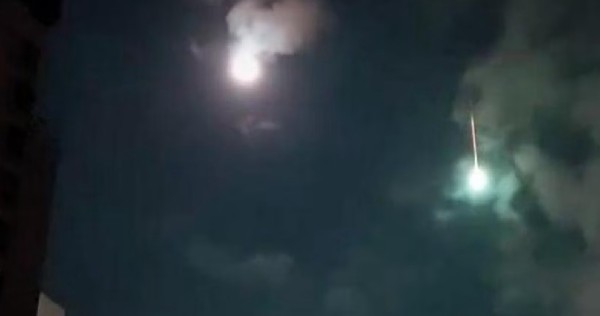
Saw the fireball over Singapore? Here’s what to know about ‘brighter than usual’ meteors and their rarity. Last Friday night (May 24), a brilliant streak illuminated the skies over Singapore, capturing the attention of observers across the nation. People from various locations recorded footage of this striking event.
Described as a “fireball” or a “bright meteor” plummeting toward Earth, the phenomenon quickly went viral on social media, sparking excitement and debates about its origin.
So, what was behind this spectacular light show, how significant was it, and how frequently do such events happen?
WHAT WAS IT?
Experts suggest that the observed fireball in Singapore was likely a celestial object entering and disintegrating in Earth’s atmosphere. However, they note the challenge in identifying the exact nature of the object.
Dr. Abel Yang, a senior lecturer at the Department of Physics at the National University of Singapore (NUS), explained, “This might be a comet or asteroid fragment, and without any remnants, it’s challenging to determine its identity.”
Dr. Cindy Ng, also a senior lecturer at NUS Physics Department, agreed, stating, “The probable causes of fireballs are meteoroids entering Earth’s atmosphere, resulting in meteors, with fireballs being brighter meteors.”
NASA defines meteoroids as small space rocks ranging from dust grain to small asteroid size. When these meteoroids enter Earth’s atmosphere and burn up, they create meteors, occasionally forming fireballs, commonly known as shooting stars.
If any part of the rock survives atmospheric entry and lands on Earth, it becomes a meteorite.
Some social media users speculated that the object might have been space debris or space junk, possibly a part of an old satellite. However, Dr. Yang and Dr. Ng clarified that the characteristics of man-made space debris re-entry differ significantly from the observed event.
Dr. Yang explained, “Fireballs caused by man-made space debris typically move slower, and we would have received advance warnings since larger debris is monitored by radar.”
He added, “Moreover, most large space debris are intentionally deorbited over uninhabited ocean areas to minimize the risk of debris impacting populated regions.”
Dr. Ng emphasized that the trajectories of space debris re-entry differ from comets entering the atmosphere, allowing scientists to distinguish between them.
“Scientists track larger space debris pieces. If the trajectory of the object aligns with a tracked piece of space debris, then scientists can confirm the fireball’s cause,” she stated.
Dr. Ng highlighted that the fireball observed over Spain and Portugal on May 18 was identified by the European Space Agency (ESA) through trajectory analysis.
“In the case of the fireball in Spain, ESA’s fireball camera captured it, enabling scientists to analyze its trajectory and determine that it was a comet,” she explained.
HOW LARGE WAS THE OBJECT?
Dr. Yang suggested that the fireball was likely a small object, probably less than a few meters long and possibly less than 1 meter in size, as there were no reports of injuries or property damage.
“Larger objects can cause shockwaves or fireballs upon entering Earth’s atmosphere, and larger impactors have caused damage,” he noted, referencing the Chelyabinsk meteor that exploded over Russia in 2013, causing injuries and widespread damage.
Dr. Ng echoed a similar estimate of the object’s size, stating, “The largest meteoroids are generally estimated to be around 1 meter in size.”
She mentioned that the object seen over Spain and Portugal was approximately 1 meter in size, according to ESA’s estimate. ESA determined the size by analyzing the energy released during the fireball, and this information was available as the event was captured on camera by the agency.




